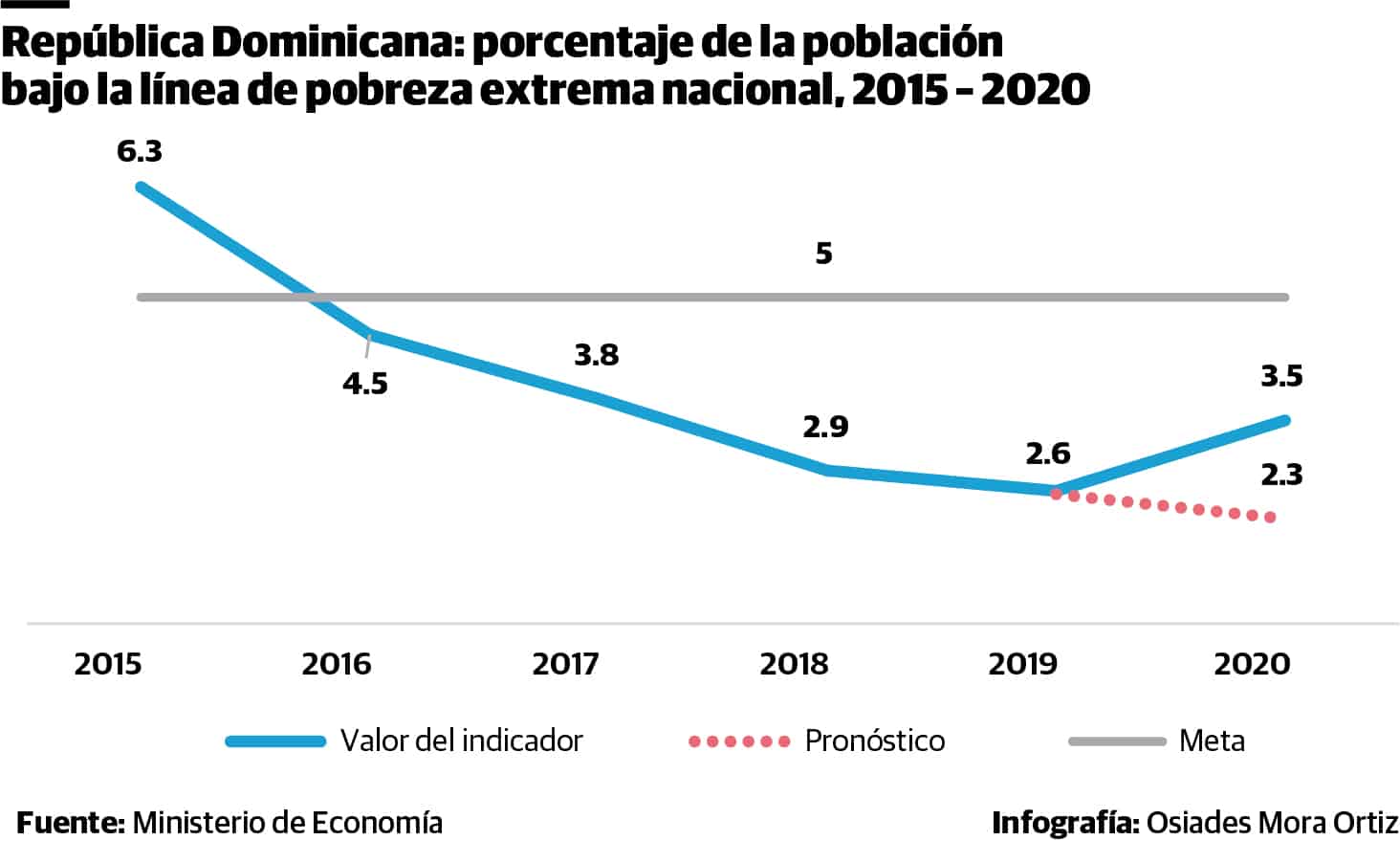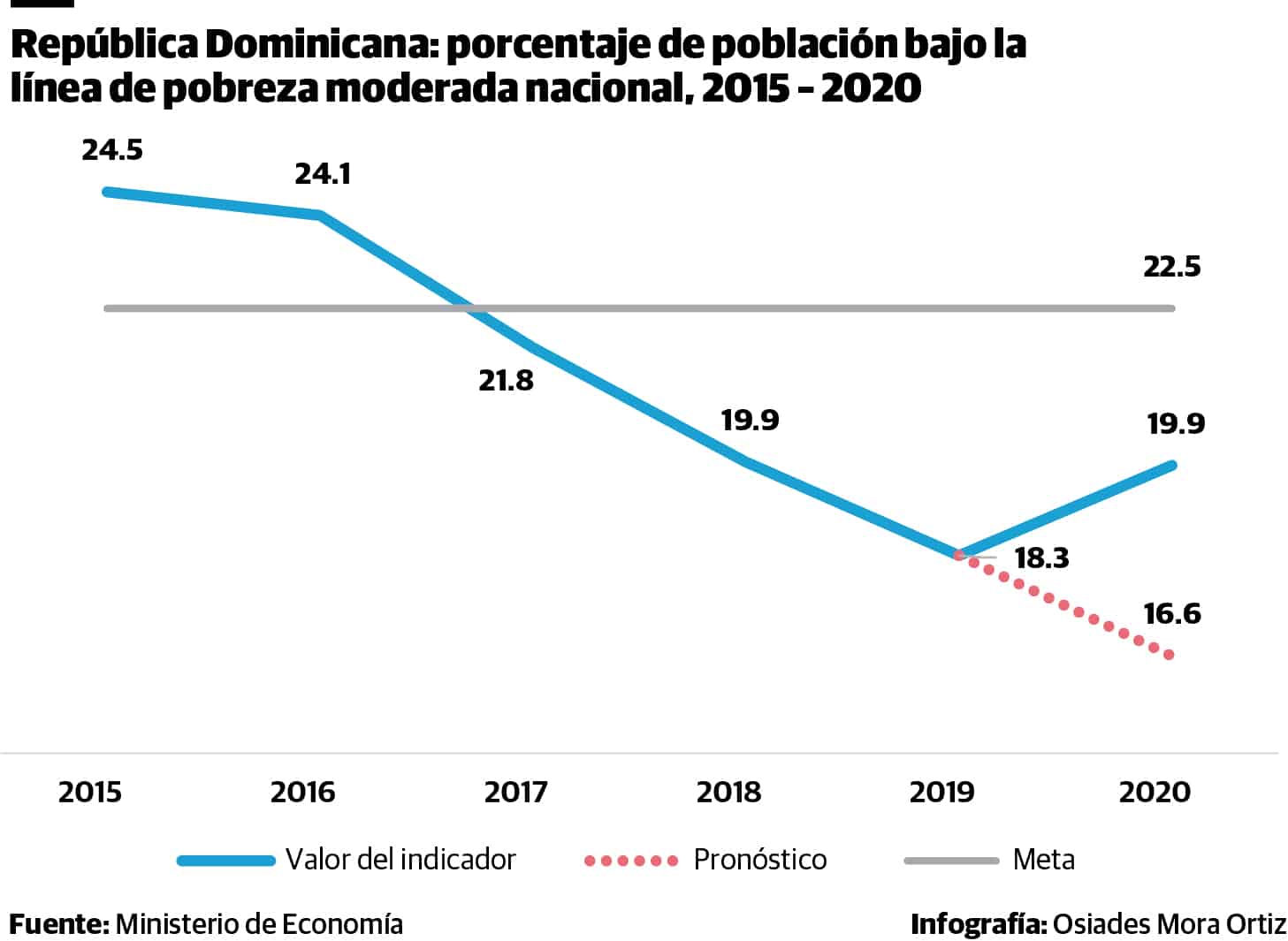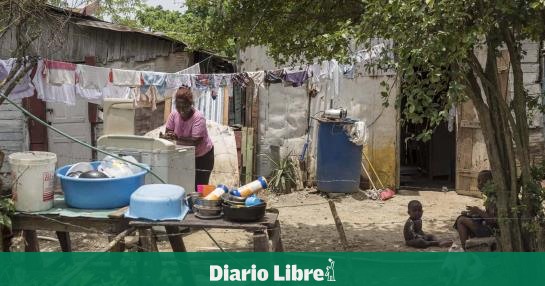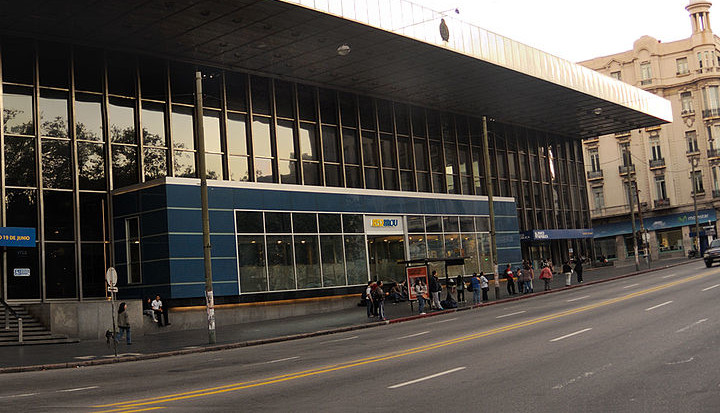The effects of pandemic of COVID-19 have been negative for the majority of indicators of the National Development Strategy (END), according to Ministry of Economy, Planning and development (Mepyd), in its ninth annual progress report on the implementation of the National Development Strategy 2030 and the fulfillment of the objectives and goals of the Multiannual National Plan of the Public Sector to 2020.
Through this document, the Mepyd points out that, due to the effects of the pandemicit is necessary to re-evaluate the goals proposed for 2030, since, despite the fact that the health crisis is transitory, its socioeconomic effects can be dragged on for many years, putting at risk the country vision that was planned at the time of preparation of the National Development Strategy.
The report shows that, since 2018, all indicators of poverty had reached their goal by 2020 in the Dominican Republic, but two of them fell back compared to 2019.
Both indicators of poverty that did not advance compared to 2019 were: 2.1, which deals with the percentage of the population below the national extreme poverty line and 2.3 on the percentage of the rural population below the national extreme poverty line. They fell 0.86% and 0.25%, respectively.
“Although the goal in this matter had already been achieved, all the indicators of poverty presented an increase in 2020, interrupting the promising results that had been recorded during the previous five years”, indicates the report.
It details that the unemployment rate increased by 38.6% for 2020, being even higher than the 2010 baseline, mainly affecting young people who do not study and are unemployed. In education at the initial and basic levels, all regions of the country showed a decrease, except for Cibao Noroeste. The coverage rate of the middle level was the least affected.
Regarding indicator 2.1, the document indicates that the eastern macroregion is the one with the largest impoverished population, with 5%, while the northern or Cibao region is the one with the lowest extreme monetary poverty, with 2%.

It points out that when disaggregating the indicator by area of residence, it follows that: in rural areas, 4.1% of the population is in extreme poverty, compared to 3.4% in urban areas. The difference in magnitude between the zones is 0.7 percentage points.
On the other hand, indicator 2.3, according to the document, one of the aspects that have been highlighted in previous studies on the matter is that this area maintained a high rate of unsatisfied basic needs and a high percentage of monetary poor. In this indicator, the macro-regions that contain the highest percentage are Greater Santo Domingo and the South, with 6% each, followed by the East (5%); the North or Cibao has the lowest incidence, with 3%.
Yesterday, the Mepyd released the Bulletin of Official Monetary Poverty Statistics in the Dominican Republic 2021, where it indicates that the monetary poverty rates had statistically insignificant changes compared to 2020, but the extreme poverty rate went from 3.51% to 3.06 % and general poverty from 23.36% to 23.85%.
In relation to the macro-regions, in 2021, general poverty increased in Greater Santo Domingo, Cibao and the South, while it decreased in the East. Meanwhile, extreme poverty decreases in Greater Santo Domingo, Cibao and East and registers an increase in the South.
In the Bulletin of Official Statistics of Monetary Poverty in the Dominican Republic 2021, it also adds that for the extreme poverty line the monthly amount per capita that a household requires to acquire a basic food basket is assumed, which guarantees the members from home the intake of the nutrients necessary to lead a healthy life, good physical and mental health.
Similarly, the general poverty line is set with the monthly amount per capita that must be available to also access the basic non-food basket, which includes clothing, footwear, housing costs, home maintenance, health, education and transportation, among others.
The official document details that the sanitary measures adopted to prevent the spread of the COVID-19 virus brought with it a stage of confinement and paralysis of the main economic activities at the national level. The consequence was a deterioration in most of the indicators of the National Development Strategyspecifically in axes 2 and 3, which focus on the quality of life of people and the economic activities of the nation.

In education at the initial and basic levels, all regions of the country showed a decrease, except for Cibao Noroeste. The coverage rate of the middle level was the least affected. Of the 10 planning regions, half decreased enrollment: Cibao Sur (which was the most affected region), Cibao Norte, Cibao Nordeste, Valdesia, Valle and Ozama.
The other regions increased their enrollment. This could be due to the fact that high school students are the oldest pre-university educational population, and, therefore, tend to have greater access and skills for digital media. During the current health crisis, the tourism sector has been affected to a greater extent than others, indicates the document published by the Mepyd.
The ninth annual progress report on the implementation of the National Development Strategy 2030 and the fulfillment of the objectives and goals of the National Multiannual Plan of the Public Sector to 2020, also indicates that the arrival of foreign tourists to the Dominican Republic decreased by 70% during 2020. Tourism is based on the expectations and preferences of visitors , so any type of disturbance can affect the image of the destination.
Hotels, restaurants, tour operators, airlines and cruise lines had to suspend their activities indefinitely due to the pandemic. These effects are reflected in the indicators of the END that focus on tourist activity.
Also, the Mepyd explains other indicators affected as exports, the electricity sector and tax pressure (due to the decrease in world trade and tax collection by the State). During the years 2015-2019, these indicators They showed promising growth, with indications that the proposed goals would be achieved.
However, in 2020 the deterioration was so strong that they present levels similar to those experienced in 2013. For example, the indicator that measures collection levels in the electricity sector had already reached its goal for 2019, but due to the difficulties caused by the pandemicin 2020 the collection levels reached a percentage of progress of just 11.1%.









